230 results found for 'Model'. Prev |1|2|3|4|5|6|7|8|9|10 | Next | View 100 per page
Low relevance matches: 109 other results may be of interest to you. Show low relevance matches
Atomic Models - All matter is made of atoms which are composed of protons, neutrons and electrons; natural radioactivity arises from the decay of nuclei in atoms ACSSU182 Year 9 Physical Sciences
Energy Transfer - Energy transfer through different mediums can be explained using wave and particle models ACSBL029 Year 11 Biodiversity and the interconnectedness of life
Ecosystem dynamics - Models of ecosystem interactions (for example, food webs, successional models) can be used to predict the impact of change and are based on interpretation of and extrapolation from sample data (for example, data derived from ecosystem surveying techniques ACSBL085 Year 12 Heredity and continuity of life
DNA genes and the continuity of life - Frequencies of genotypes and phenotypes of offspring can be predicted using probability models, including Punnett squares, and by taking into consideration patterns of inheritance, including the effects of dominant, autosomal and sex-linked alleles and mu ACSBL110 Year 12 Maintaining the internal environment
Homeostasis - Homeostasis involves a stimulus response model in which change in external or internal environmental conditions is detected and appropriate responses occur via negative feedback; in vertebrates, receptors and effectors are linked via a control centre by n ACSCH018 Year 11 Chemical fundamentals
Properties and structure of atoms - Atoms can be modelled as a nucleus surrounded by electrons in distinct energy levels, held together by electrostatic forces of attraction between the nucleus and electrons; atoms can be represented using electron shell diagrams (all electron shells or val ACSCH032 Year 11 Chemical fundamentals
Properties and structure of materials - The characteristic properties of metals (for example, malleability, thermal conductivity, electrical conductivity) are explained by modelling metallic bonding as a regular arrangement of positive ions (cations) made stable by electrostatic forces of attra ACSCH056 Year 11 Molecular interactions and reactions
Intermolecular forces and gases - The shapes of molecules can be explained and predicted using three dimensional representations of electrons as charge clouds and using valence shell electron pair repulsion (VSEPR) theory ACSCH099 Year 12 Equilibrium acids and redox reactions
Chemical equilibrium systems - The relationship between acids and bases in equilibrium systems can be explained using the Brønsted Lowry model and represented using chemical equations that illustrate the transfer of hydrogen ions ACSCH103 Year 12 Equilibrium acids and redox reactions
Oxidation and reduction - A range of reactions, including displacement reactions of metals, combustion, corrosion, and electrochemical processes, can be modelled as redox reactions involving oxidation of one substance and reduction of another substance ACSCH104 Year 12 Equilibrium acids and redox reactions
Oxidation and reduction - Oxidation can be modelled as the loss of electrons from a chemical species, and reduction can be modelled as the gain of electrons by a chemical species; these processes can be represented using half equations ACSPH063 Year 11 Linear Motion and Waves
Linear motion and force - Newton’s Three Laws of Motion describe the relationship between the force or forces acting on an object, modelled as a point mass, and the motion of the object due to the application of the force or forces ACSPH076 Year 11 Linear Motion and Waves
Waves - A wave model explains a wide range of lightrelated phenomena including reflection, refraction, total internal reflection, dispersion, diffraction and interference; a transverse wave model is required to explain polarisation ACSPH139 Year 12 Revolutions in modern physics
Quantum theory - The Bohr model of the hydrogen atom integrates light quanta and atomic energy states to explain the specific wavelengths in the hydrogen spectrum and in the spectra of other simple atoms; the Bohr model enables line spectra to be correlated with atomic en ACSCH031 Year 11 Chemical fundamentals
Properties and structure of materials - The properties of ionic compounds (for example, high melting point, brittleness, ability to conduct electricity when liquid or in solution) are explained by modelling ionic bonding as ions arranged in a crystalline lattice structure with forces of attract ACSPH071 Year 11 Linear Motion and Waves
Waves - The mechanical wave model can be used to explain phenomena related to reflection and refraction ACSPH074 Year 11 Linear Motion and Waves
Waves - Light exhibits many wave properties; however, it cannot be modelled as a mechanical wave because it can travel through a vacuum ACSPH075 Year 11 Linear Motion and Waves
Waves - A ray model of light may be used to describe reflection, refraction and image formation from lenses and mirrors ACSPH140 Year 12 Revolutions in modern physics
Quantum theory - On the atomic level, energy and matter exhibit the characteristics of both waves and particles
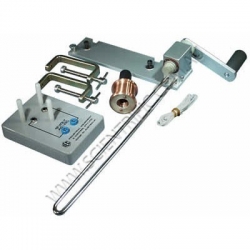
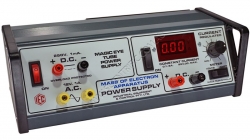
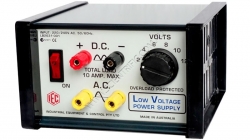
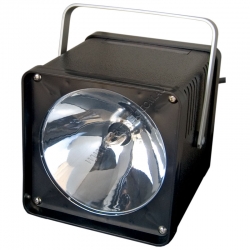
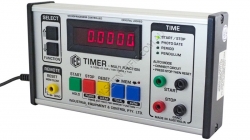
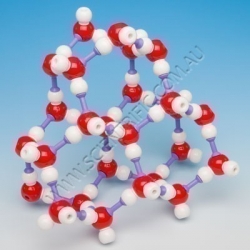
.jpg)
.jpg)
_27_ion_Open_model.jpg)
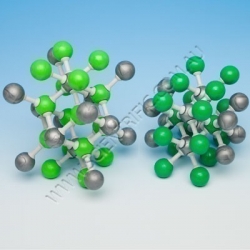
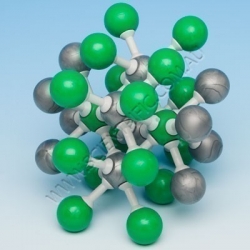
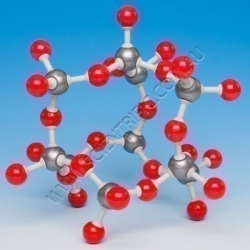
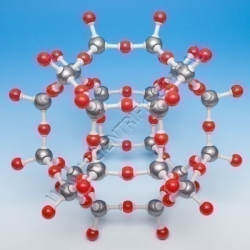
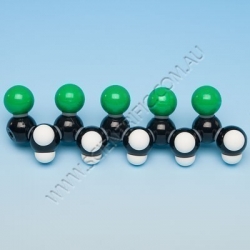
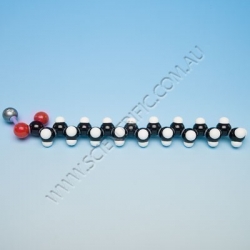
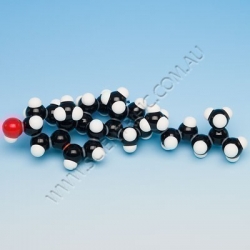
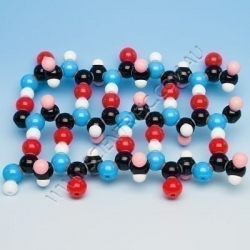
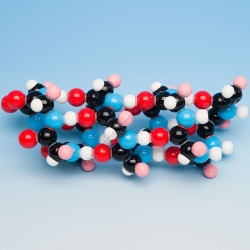
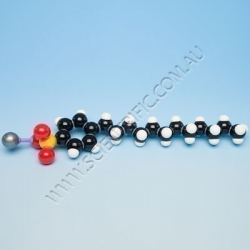
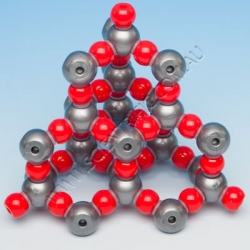
230 results found for 'Model'. Prev |1|2|3|4|5|6|7|8|9|10 | Next | View 100 per page
Low relevance matches: 109 other results may be of interest to you. Show low relevance matches
Curriculum resources related to 'Model'
ACSSU177 Year 9 Chemical SciencesAtomic Models - All matter is made of atoms which are composed of protons, neutrons and electrons; natural radioactivity arises from the decay of nuclei in atoms ACSSU182 Year 9 Physical Sciences
Energy Transfer - Energy transfer through different mediums can be explained using wave and particle models ACSBL029 Year 11 Biodiversity and the interconnectedness of life
Ecosystem dynamics - Models of ecosystem interactions (for example, food webs, successional models) can be used to predict the impact of change and are based on interpretation of and extrapolation from sample data (for example, data derived from ecosystem surveying techniques ACSBL085 Year 12 Heredity and continuity of life
DNA genes and the continuity of life - Frequencies of genotypes and phenotypes of offspring can be predicted using probability models, including Punnett squares, and by taking into consideration patterns of inheritance, including the effects of dominant, autosomal and sex-linked alleles and mu ACSBL110 Year 12 Maintaining the internal environment
Homeostasis - Homeostasis involves a stimulus response model in which change in external or internal environmental conditions is detected and appropriate responses occur via negative feedback; in vertebrates, receptors and effectors are linked via a control centre by n ACSCH018 Year 11 Chemical fundamentals
Properties and structure of atoms - Atoms can be modelled as a nucleus surrounded by electrons in distinct energy levels, held together by electrostatic forces of attraction between the nucleus and electrons; atoms can be represented using electron shell diagrams (all electron shells or val ACSCH032 Year 11 Chemical fundamentals
Properties and structure of materials - The characteristic properties of metals (for example, malleability, thermal conductivity, electrical conductivity) are explained by modelling metallic bonding as a regular arrangement of positive ions (cations) made stable by electrostatic forces of attra ACSCH056 Year 11 Molecular interactions and reactions
Intermolecular forces and gases - The shapes of molecules can be explained and predicted using three dimensional representations of electrons as charge clouds and using valence shell electron pair repulsion (VSEPR) theory ACSCH099 Year 12 Equilibrium acids and redox reactions
Chemical equilibrium systems - The relationship between acids and bases in equilibrium systems can be explained using the Brønsted Lowry model and represented using chemical equations that illustrate the transfer of hydrogen ions ACSCH103 Year 12 Equilibrium acids and redox reactions
Oxidation and reduction - A range of reactions, including displacement reactions of metals, combustion, corrosion, and electrochemical processes, can be modelled as redox reactions involving oxidation of one substance and reduction of another substance ACSCH104 Year 12 Equilibrium acids and redox reactions
Oxidation and reduction - Oxidation can be modelled as the loss of electrons from a chemical species, and reduction can be modelled as the gain of electrons by a chemical species; these processes can be represented using half equations ACSPH063 Year 11 Linear Motion and Waves
Linear motion and force - Newton’s Three Laws of Motion describe the relationship between the force or forces acting on an object, modelled as a point mass, and the motion of the object due to the application of the force or forces ACSPH076 Year 11 Linear Motion and Waves
Waves - A wave model explains a wide range of lightrelated phenomena including reflection, refraction, total internal reflection, dispersion, diffraction and interference; a transverse wave model is required to explain polarisation ACSPH139 Year 12 Revolutions in modern physics
Quantum theory - The Bohr model of the hydrogen atom integrates light quanta and atomic energy states to explain the specific wavelengths in the hydrogen spectrum and in the spectra of other simple atoms; the Bohr model enables line spectra to be correlated with atomic en ACSCH031 Year 11 Chemical fundamentals
Properties and structure of materials - The properties of ionic compounds (for example, high melting point, brittleness, ability to conduct electricity when liquid or in solution) are explained by modelling ionic bonding as ions arranged in a crystalline lattice structure with forces of attract ACSPH071 Year 11 Linear Motion and Waves
Waves - The mechanical wave model can be used to explain phenomena related to reflection and refraction ACSPH074 Year 11 Linear Motion and Waves
Waves - Light exhibits many wave properties; however, it cannot be modelled as a mechanical wave because it can travel through a vacuum ACSPH075 Year 11 Linear Motion and Waves
Waves - A ray model of light may be used to describe reflection, refraction and image formation from lenses and mirrors ACSPH140 Year 12 Revolutions in modern physics
Quantum theory - On the atomic level, energy and matter exhibit the characteristics of both waves and particles
Products related to 'Model'

IEC Mechanical Equivalent of Heat (J Apparatus)
IEC MECHANICAL EQUIVALENT OF HEAT ('J' APPARATUS)
The IEC Mechanical Equivalent of Heat or 'J' apparatus is an old unit patterned on the old Griffin model in the UK where mechanical work done is converted to heat and compared with the electrical equivalent.
The base, whi...
Order code: HL3800-001
IEC Amplifier DC for old Franck Hertz Apparatus
IEC AMPLIFIER DC FOR OLD 'FRANCK HERTZ' APPARATUS
An old model DC Amplifier originally designed to be added to AP1870-001 'Franck Hertz' apparatus to amplify the very small currents so they can be seen on a student bench meter.
The current model 'Franck Hertz' unit has...
Order code: LB0070-001

IEC Power Supply for Mass of Electron 250 and 12V plus 25 Volts Constant Current Digital Meter
IEC MASS OF ELECTRON POWER SUPPLY
A special purpose power supply designed for use with the AP2120-001 IEC Mass of an Electron Apparatus. It is also a useful general purpose power supply when a preset constant current is required through a load up to a maximum of 2 amps an...
Order code: LB2622-002

IEC Power Supply Switched General Purpose 2 to 12V AC DC
IEC POWER SUPPLY 2-12V AC/DC 10A WITH OVERLOAD LED
A handy front panel LED indicates when the overload of this model power supply has tripped and reset.
In all other details it is identical to model LB2631-001
This ...
Order code: LB2631-101

IEC Stroboscope Xenon Digital 240V AC XE
IEC DIGITAL XENON STROBOSCOPE MODEL XE 240V AC
The 240V AC IEC XE Xenon Stroboscope has a large 150mm diameter reflector that produces a very bright flash covering a wide area. The flash intensity automatically adjusts to provide the best brightness as the flash rate is c...
Order code: LB3808-001
IEC Stroboscope Xenon Digital
IEC DIGITAL XENON STROBOSCOPE MODEL XEH 240V AC
The 240V AC IEC XEH Xenon Stroboscope has a large 150mm diameter reflector that produces a very bright flash covering a wide area. The flash intensity automatically adjusts to provide the best brightness as the flash rate is...
Order code: LB3809-001
IEC Timer/Counter/Frequency 20 Space Memory 12V
IEC TIMER/COUNTER/FREQUENCY 12V
A versatile, compact and powerful IEC Timer-Counter/Frequency instrument that runs from a 240/12V AC plug pack for general laboratory timing to 0.1mS, counting and measuring frequency or rate. It does not perform Geiger Counting.
With a ...
Order code: LB4063-001
IEC Timer/Counter/Frequency 20 Space Memory 240V
IEC TIMER/COUNTER/FREQUENCY 240V
A versatile, compact and powerful IEC Timer-Counter/Frequency instrument that runs from 240V AC mains power for general laboratory timing to 0.1mS, counting and measuring frequency or rate. It does not perform Geiger Counting.
With a br...
Order code: LB4063-101

IEC Timer LED 6 Digit 999.999Sx0.1ms 12V AC/DC Plug-Pack
IEC MULTI FUNCTION TIMER 12V
This versatile compact low voltage multi function Timer is designed for general purpose timing in the laboratory and and is run by 240/12V AC PlugPak (not supplied). It does not have a power outlet for photogates and it cannot control the IEC ...
Order code: LB4064-001
Molymod Oxygen Red 4 Holes 23mm Tetrahedral
23mm MOLYMOD OXYGEN ATOM 4 HOLES TETRAHEDRAL
A pack of 10 red oxygen atoms 23mm diameter and with 4 holes angled at 109° (tetrahedral). Used mainly to model water/ice molecules and included in most Molymod® student and teacher sets.
A quality, genuine Molymod® prod...
Order code: MA-402-10

Molymod Ice
MOLYMOD ICE
Supplied in a 4 compartment box with illustrated instructions this kit contains sufficient oxygen and hydrogen atoms plus links to build a two layer, 26 water molecule model of ice.
Included are 26 red oxygen atoms, 52 white Hydrogen atoms, 26 grey medium ...
Order code: MKO-123-26
.jpg)
Molymod Zinc Blend Zinc Sulphide
MOLYMOD ZINC BLENDE
Zinc Blende or zinc sulphide is a covalent lattice of alternate zinc and sulphur with the atom parts joined together to give a hexagonal network.
Supplied in a four compartment box with illustrated instructions, this kit contains 22 grey zinc 4 hole a...
Order code: MKO-125-45
.jpg)
Molymod Calcite Calcium Carbonate
MOLYMOD CALCITE
This model of Calcite or calcium carbonate is supplied pre-assembled and includes 66 atoms:
14 grey metal 6 hole octahedral atoms
13 black carbon 3 hole trigonal planar atoms
39 red oxygen trigonal planar
and required links.
A quality, genuine Molym...
Order code: MKO-126-66
_27_ion_Open_model.jpg)
Molymod Sodium Chloride Larger Chloride Ions
MOLYMOD SODUIM CHLORIDE WITH LARGER CHLORIDE IONS
Supplied in a 4 compartment box with illustrated instructions, this Sodium Chloride kit contains 13 grey 23mm sodium 6 hole atoms, 14 green larger 32mm chloride 6 hole atoms and 2 sets of links.
Use the 54 grey medium l...
Order code: MKO-127-27

Molymod Fluorite (Calcium Fluoride) assembled
A genuine Molymod® product NOT a cloned look-a-like.
This pre-assembled model contains a total of 30 atoms plus links to depict a model of CaF2.
Supplied as a pre-assembled model.
Order code: MKO-132-30

Molymod Caesium Chloride 30 Atoms
MOLYMOD CAESIUM CHLORIDE
Supplied pre-assembled, this model of Caesium Chloride is made up of 12 grey metal atoms, 18 green halogen atoms and the required links.
Note: this model cannot be expanded by adding extra atom parts.
A quality, genuine Molymod® product full...
Order code: MKO-133-30
Molymod Quartz
MOLYMOD QUARTZ
Supplied in a four compartment box with illustrated instructions, this kit contains 10 grey silicon atoms, 28 red oxygen atoms and the required links to build the model of silicon dioxide pictured.
A quality, genuine Molymod® product fully compatible w...
Order code: MKO-136-38

Molymod Zeolite Single Sodalite Cage
A genuine Molymod® product NOT a cloned look-a-like.
This kit contains a total of 84 atoms:
24 x Silicon [4-hole, grey]
24 x Oxygen [1-hole, red]
36 x Oxygen [2-hole, red]
plus links to make a single cavity open model of a Sodalite Cage. The cage consists of 24 lin...
Order code: MKO-136-84

Molymod Polyvinylchloride (PVC)
MOLYMOD POLYVINYLCHLORIDE
A set of genuine Molymod® black carbon, white dome hydrogen and green chlorine atoms, plus links and a tool to demonstrate the mechanism of Polymerisation and build 5 monomer units into a compact model of Polyvinylchloride (PVC).
The approxi...
Order code: MKS-105-5

Molymod Soap
MOLYMOD SOAP
A set of genuine Molymod® black carbon, red oxygen, grey sodium and white dome hydrogen atoms,
plus links and a tool to build a model of a soap molecule.
The approximate inter-nuclear scale is 1.45cm/Angstrom
Included:
• 17 x MA-400 black ca...
Order code: MKS-113

Molymod Biochemistry Cholesterol
MOLYMOD CHOLESTEROL
A set of genuine Molymod® black carbon, red oxygen and white dome hydrogen atoms,
plus links and a tool to build a model of a cholesterol molecule C27H46O
The approximate inter-nuclear scale is 1.45cm/Angstrom
Include...
Order code: MKS-119

Molymod Protein Beta-pleated Sheet Structure Fifteen Peptide Units
MOLYMOD PROTEIN BETA-PLEATED SHEET
Use this set of genuine Molymod® atoms to build 15 peptide units and assemble them into
a protein model with beta-pleated sheet structure.
Includes a total of 105 atom parts with links and a Link Remover tool.
Supplied in a sing...
Order code: MKS-120-15

Molymod Alpha-Helix 15 Peptide Units
MOLYMOD ALPHA-HELIX 15 PEPTIDE UNITS
Use this set of genuine Molymod® atoms to build 15 peptide units and assemble them into
a protein model in an alpha-helix structure.
Includes a total of 105 atom parts with links and a Link Remover tool.
Supplied with instruct...
Order code: MKS-121-15

Molymod Detergent
A genuine Molymod® product NOT a cloned look-a-like.
Contains a total of 52 'atoms' plus links and a tool to build a model of a detergent molecule.
Supplied in a four compartment box.
Order code: MKS-130
Molymod Silicon Dioxide
A genuine Molymod® product NOT a cloned look-a-like.
This model is of a "diamond" type Silicon Dioxide structure with linear oxygen. Contains 66 atoms.
Note: Sometimes advertised as MKO-137-66
Order code: MKS-137-66
230 results found for 'Model'. Prev |1|2|3|4|5|6|7|8|9|10 | Next | View 100 per page



 ,
,